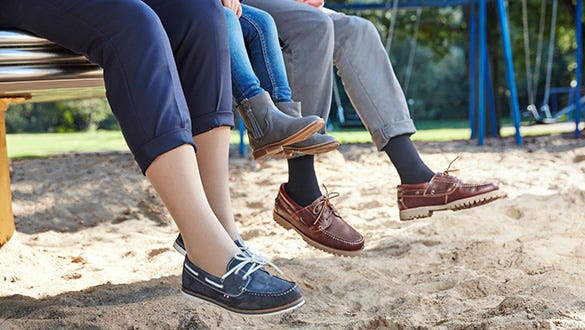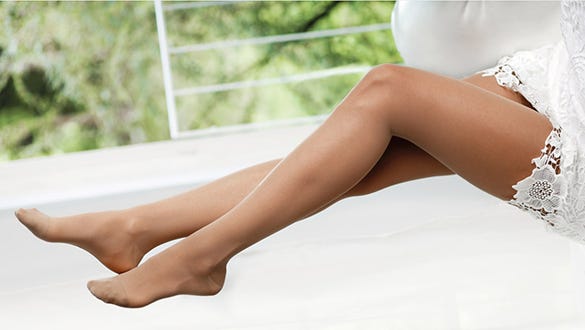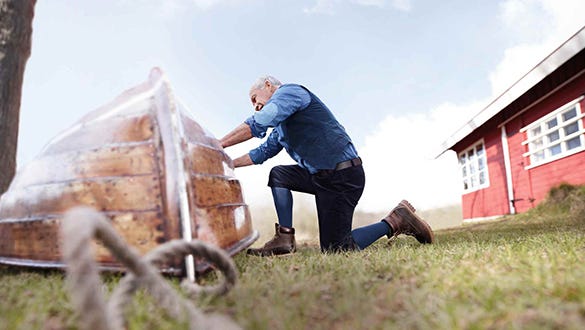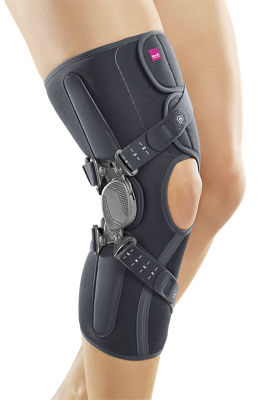- Free First Class Delivery
- Buyer Protection
- Secure Online Shopping
- Healthcare Professional? Click here
Compression treatment


Categories
Disease-modifying treatment for venous diseases
It is a common misnomer that medical compression stockings are called "support stockings". But we must distinguish clearly between these two products.
Medical compression garments are medical devices that the doctor or clinician can prescribe if needed, if the patient has the right indications or if they think they are appropriate. Patients are then measured for either an off-the-shelf garment or a made to measure garment.
The veins in the legs ensure the return flow of blood back to the heart. The venous valves in the veins function like non-return valves, which only allow the blood to flow in one direction, namely in the direction of the heart, and thus prevent blood pooling in the legs. A lack of exercise and too much standing or sitting places considerable pressure on the venous system for many hours of the day.
If the calf's muscle pump no longer adequately supports the return transport of the blood, the veins widen and the venous valves no longer close properly, the legs grow tired and heavy. Swelling and socks or shoes cutting into the skin are a sign of this. Spider veins, varicose veins or leg ulcers may develop later.
Only the medically correct pressure gradient guarantees medical efficacy
The pressure exerted by compression stockings decreases continually in a distal (ankle/foot) to proximal (thigh) direction, because this degressive pressure gradient complies with the medical requirements on compression therapy.
Since humans stand erect, the venous pressure is highest in the ankle/foot region (distally). The lower third of the lower leg is therefore particularly at risk of pathological disorders. Thus, the pressure exerted by the compression stocking must be particularly high there.
By contrast, the pressure gradient must be relieved in the pit of the knee to prevent constriction of the superficial vein. The pressure gradient decreases steadily from 100% at the ankle to 40% at the thigh.
The pressure exerted at the ankle defines the classification of medical compression garments in the four available compression classes.
Products from medi
Why support stockings are not medical compression garments
As a rule support stockings do not have a controlled diminishing pressure gradient. This can lead to the situation in which blood still pools in the legs and venous diseases still develop or the symptoms are not relieved.
The stocking size is normally determined by the shoe size.
Since support stockings are not prescribable, they are only suitable for people without any previous venous problems. They have absolutely no place in clinical medicine!
Compression therapy for patients with oedema
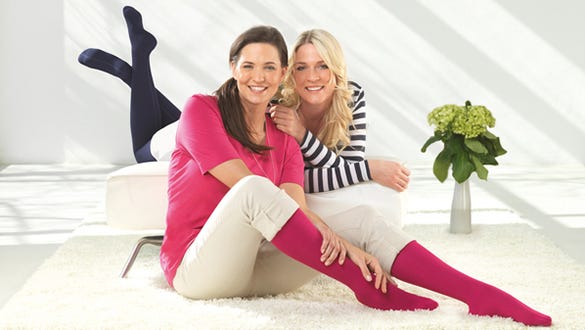

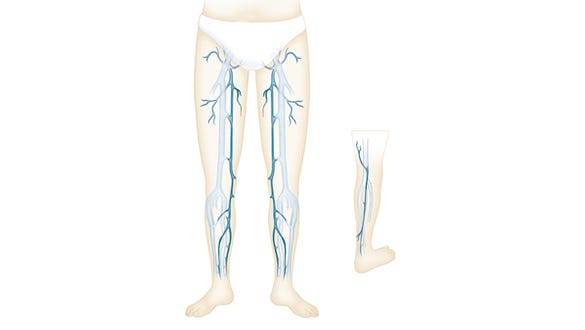

If the function of the venous system is impaired, the pressure in the veins rises and watery blood components leak into the tissues, the ankles and legs can swell up. In this situation, the oedema patient's impaired lymphatic system has to work even harder to transport the fluid in the tissues back to the heart.
This is when flat knit mediven compression garments ensure the best possible support to maintain the results of lymphatic drainage, which is why it is so important to wear the stockings regularly.
This is when flat knit mediven compression garments ensure the best possible support to maintain the results of lymphatic drainage, which is why it is so important to wear the stockings regularly.
Compression garments prevent the progression of CVI
Compared with healthy individuals, patients with oedema and venous ulcers have lower levels of the TJ molecules [tight junction molecules] CLDN-1, CLDN-5 and protein.
Biopsies that were taken from healthy individuals and from patients with oedema and venous ulcers before and four weeks after compression therapy, show significantly higher levels of the TJ molecules mRNA, CLDN-1, CLDN-5 and protein after four weeks.
This is a clear indication that compression therapy is capable of overcoming these barriers, thus preventing the progression of chronic venous insufficiency that is caused by TJs*.
A decisive factor in the success of compression therapy is patient compliance, which increases as the number of patient-friendly attributes of the compression stockings used also increases. With their high elasticity and transparency, easy handling and fashionable colours, mediven compression garments set the standard for patient-friendliness and treatment-promoting compliance.
Compression garments improve muscle metabolism
Not only those with venous disease, but also those with no venous problems profit from the effect of compression garments.
The results of a study that enrolled 19 marathon runners with healthy veins, who each ran a half marathon with and without compression stockings (20 mm Hg), show – in comparison to the run without – that with compression stockings, there is:
- more rapid recovery in terms of the venous refilling time
- partial restoration of the venous pump force
- running times up to 15% better than without the compression garment
The investigators’ summary: wearing compression garments improves muscle metabolism and promotes a more rapid recovery after athletic exertion**. As part of a high-compliance compression therapy, which, in particular, can be achieved with the use of patient-friendly garments, such as medi compression stockings, patients with venous disease profit from the known effects: the spontaneous improvement of symptoms and the prevention of a progressive course of the venous disease.
Medical compression garments from medi
One very special feature of medical compression stockings from medi is that they don't look like medical aids. They are as sheer as nylons and bang up to date thanks to a large selection of standard and trend colours for every fashion season. Furthermore, there is an attractive selection of chic topbands for thigh-length stockings.
There are medical compression garments for men too, (e.g. mediven for men) that are visually indistinguishable from conventional men's knee socks. For the user, this means medical efficacy combined with fashionable standards and the highest comfort in wear.
Compression garments from medi fit perfectly and no not slip or pinch.
Thanks to Clima Comfort technology, sweaty legs are a thing of the past, because the stocking quickly transports the moisture away to the outside of the garment. Thus there is no reason for not wearing a medi compression garment during the summer as well.

